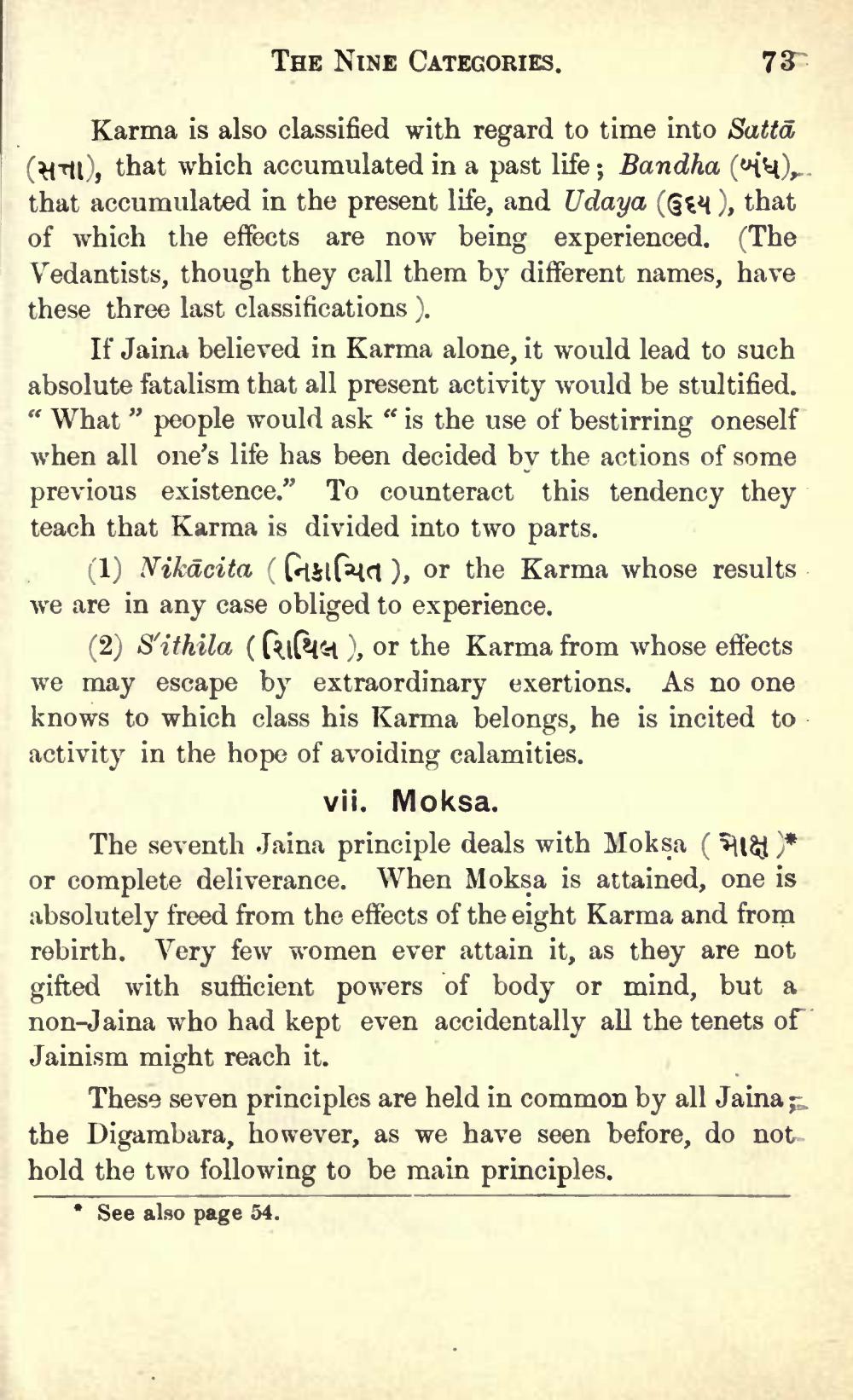________________
THE NINE CATEGORIES.
73
Karma is also classified with regard to time into Sattā (7741), that which accumulated in a past life; Bandha (vil), that accumulated in the present life, and Udaya (@E4), that of which the effects are now being experienced. (The Vedantists, though they call them by different names, have these three last classifications ).
If Jaina believed in Karma alone, it would lead to such absolute fatalism that all present activity would be stultified. “What” people would ask “is the use of bestirring oneself when all one's life has been decided by the actions of some previous existence." To counteract this tendency they teach that Karma is divided into two parts.
(1) Nikācita (Glstra), or the Karma whose results we are in any case obliged to experience.
(2) S'ithila (file ), or the Karma from whose effects we may escape by extraordinary exertions. As no one knows to which class his Karma belongs, he is incited to activity in the hope of avoiding calamities.
vii. Moksa. The seventh Jaina principle deals with Moksa (718)* or complete deliverance. When Moksa is attained, one is absolutely freed from the effects of the eight Karma and from rebirth. Very few women ever attain it, as they are not gifted with sufficient powers of body or mind, but a non-Jaina who had kept even accidentally all the tenets of Jainism might reach it.
These seven principles are held in common by all Jaina ; the Digambara, however, as we have seen before, do not hold the two following to be main principles.
See also page 54.




